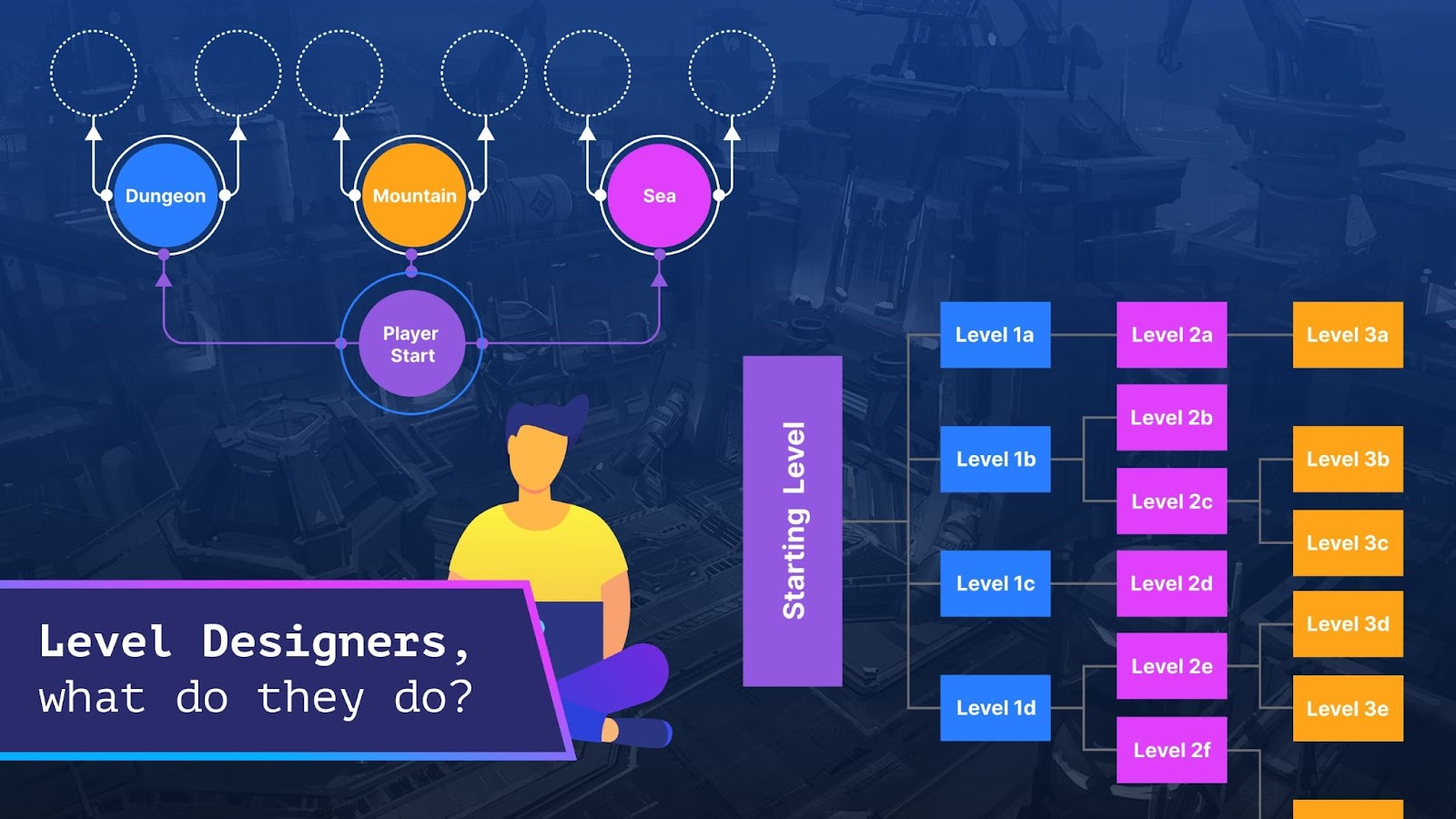
Short answer: A level designer crafts the playable spaces—layouts, encounters, pacing, and moment-to-moment challenges—so the game’s rules turn into memorable experiences.
Who is NOT a Level Designer?
- Someone who only writes the story (that’s Narrative Design), is not a Level Designer.
- Someone who only sets global rules/systems (that’s Game Design), is not a Level Designer.
- Someone who only builds 3D assets (that’s Environment/Props Art), is not a Level Designer.
- Someone who only directs the team (that’s Game/Creative Direction), is not a Level Designer.
What does a Level Designer do?
- Graybox/blockout spaces: create playable layouts with simple geometry to test flow.
- Encounters & pacing: enemy placement, resources, checkpoints, difficulty ramp.
- Guidance & readability: landmarks, lighting cues, breadcrumbs, sightlines.
- Scripting: triggers, AI spawns, doors, puzzles, objectives (often with visual scripting).
- Playtesting & iteration: observe players, fix friction, tune timings and routes.
- Collaboration: align with Game Design (rules), Environment/Lighting (final art), Audio (feedback), QA (issues), and Producers (scope).
Deliverables
- Annotated maps (top-down + callouts), blockouts, encounter scripts, spawn tables, pacing charts, checkpoint plans, test notes.
Why it matters
Great level design turns solid mechanics into clarity, flow, and emotion—teaching, testing, surprising, and rewarding players through space.
Common misconceptions
- “Level design = pretty environments.” → It’s about playability and flow first; visuals come later.
- “You must be a master modeler.” → You must prototype layouts; final art is another role.
- “It’s just placing enemies.” → It’s space + systems + psychology working together.
Core skills & tools
- Spatial design & readability, combat encounter design, puzzle structuring.
- Engines: Unreal (Geometry/Blueprints), Unity (ProBuilder/Timeline), proprietary editors.
- Metrics: jump arcs, enemy ranges, FOV, traversal speed; build your own metric sheet.
- Soft skills: observation, iteration discipline, communication with art/code.
Practical frameworks
- Teach → Test → Twist → Mastery: micro-loops inside a level.
- Golden Path vs. Optional Loops: one clear route + enticing side routes.
- Encounter Triangle: space (cover/lines), enemies (behaviors), resources (health/ammo).
- Graybox Pipeline: Blockout → Instrument (metrics) → Playtest → Iterate → Art pass.
Portfolio tips
Show short videos/GIFs of graybox runs, with overlays explaining goals, guidance, and iteration. Include top-downs with callouts and before/after iterations.
Quick example
Think Celeste: compact rooms teach a move, then raise complexity while offering breathers—tight readability, precise metrics, and escalating mastery.
Author: Pouria Mojdeh
References:
- Christopher W. Totten – An Architectural Approach to Level Design (CRC Press, 2019)
- Rudolf Kremers – Level Design: Concept, Theory, and Practice (Routledge/CRC Press, 2009)
- Scott Rogers – Level Up! The Guide to Great Video Game Design (Wiley, 2010)
- Steve Swink – Game Feel: A Game Designer’s Guide to Virtual Sensation (Morgan Kaufmann, 2009)
- Game Developer (formerly Gamasutra) – www.gamedeveloper.com
